Shin Megami Tensei V takes place in two Tokyos — both are real, despite what the angels will tell you on their worst days. Bodies and ghosts alike still pump through streets, subway stations, and the city’s other familiar arteries. They cross long-forgotten leylines, producing a new arcane geometry — all cell phones, nameless gods, and hungry demons. The God of this world may be dead, but the cities are not.
The Shin Megami Tensei series is the flagship franchise of Atlus, a Japanese publishing juggernaut. However, despite its cult following, impeccable gameplay, and unparalleled character design, the series has yet to firmly cement itself in the U.S. gaming consciousness. Instead, its spinoff series Persona has come to define many people’s idea of the modern JRPG. But even when overshadowed by the series it started, Shin Megami Tensei remains defiantly strange — and Shin Megami Tensei V may be the series’ best game yet.
The franchise is known for its rewarding, expansive, and tough-as-nails combat, its terse, nuanced writing about faith, philosophy, and power, and some of the best (and most psychosexual) enemy designs in the entire medium. Shin Megami Tensei V embodies every one of these aspects in spades, iterating upon and refining them while never demanding that a player be familiar with the games that came before it. I believe it can mark not only a turning point for the series’ narrative and thematic core, but for its place in the mainstream gaming canon.
All of this in spite of the dozens of hours I lost to its barebones save system.
Shin Megami Tensei V opens with an eight- to ten-hour trek through the desert, following a short introduction set in modern Tokyo. It is, much like all of the sand, incredibly abrasive. The tutorial lasts about two hours total, a fact I learned very well by repeating it almost four times because I kept forgetting to save after completing it — only to be absolutely ruined by a surprisingly difficult encounter. Shin Megami Tensei does not have any auto-saving or checkpoints. My actual playtime is about 15 hours more than what the in-game clock tells me.
You play as a Nahobino, a fusion of human and demon that has the potential to grow into a god. Early on, SMT V establishes that the Abrahamic God, referred to as YHVH throughout most of the series, was just one of many truly divine beings, referred to as Nahobino, composed of equal parts Knowledge and Life. However, YHVH eventually stripped his fellow divinities of their Knowledge — which was then passed on to humans when we ate from the Tree of Knowledge of Good and Evil. YHVH then altered the laws of the universe to prevent the fusion of humans and demons, preventing any potential Nahobino from challenging Him.
In the second chapter of the book of Genesis, God creates two humans — Adam and Eve — who wander the Garden of Eden. They cannot die and their every need is satiated. There is, however, one rule. They cannot eat the fruit from a particular tree, which contains knowledge of good and evil. One day, Eve, after being convinced by a serpent, eats the fruit and both Adam and Eve are cast out of heaven and rendered mortal. Most people would tell you that she was tricked into eating the fruit — but I don’t think I would call what happens to Eve a trick.
The serpent’s core argument is simple and compelling. “God knows the truth of good and evil. Don’t you want to be closer to God?”
I don’t know how you can fault her for wanting that.
After a few hours, the game reveals that God was petty and cruel and that he has been dead for 18 years. Then, Shin Megami Tensei V asks you a difficult question: What do you do with the absent throne of creation?
To answer this question, you spend a lot of time fighting angels and demons alike using the series signature “Press-Turn” battle system, which it introduced in SMT III: Nocturne. It remains possibly the best turn-based combat system in the entire medium.
It is, on its face, pretty simple. Demons have elemental affinities — targeting their weaknesses or landing a critical hit grants an extra action and missing an attack or using an ability that a demon is immune to will take away two actions. The same rules apply to both you and the demons you face.
You and your three demonic companions, which you can recruit through a mix of conversation trees and gifts during any random encounter or fuse from those who have already joined you, begin every turn with one action. This means that any given turn can have between one and eight total actions if you repeatedly crit or hit an enemy’s weakness. If that sounds like a lot, it is. However, you often need all eight of those actions to survive the game’s brutal encounters. The battle system works both ways, after all.
The Shin Megami Tensei series has a reputation for its astonishingly difficult, “unfair” boss fights — this reputation is both inaccurate and well deserved. But of course it is difficult; you are fighting cast-off, lonely, and broken gods, after all. You are challenging the bones of the world itself.
Encounters can be incredibly difficult — even the assorted enemies wandering the game’s overworld can wipe your party if you aren’t paying attention — but they are rarely unfair, on account of the massive toolkit the series gives you access to.
Defeating a Shin Megami Tensei boss usually isn’t a matter of execution but planning, which is why the series can appear unfair to new players. Your first attempt at a boss, unless you’re extremely lucky or clairvoyant, will not go well. They will have unreasonably powerful attacks, you won’t know their weaknesses, and they will likely outlevel you. Grinding will not solve this problem either — unless you manage to significantly outlevel a boss (10 levels or more) you will still get your arse kicked if you go into a fight unprepared. This is where the series’ signature Fusion system comes in handy.
You acquire almost every demon in the game in one of two ways (excluding some demons who join you after quests): negotiation and fusion. Negotiating with demons requires you to convince them to join your party through a mix of conversation and bribery. These demons will be standard and pretty underwhelming. Fighting a boss with a negotiated demon will not go well unless you’ve sunk a lot of time into levelling them up and they’re a natural fit for that particular boss, which is extremely rare. Fused demons, on the other hand, are much more reliable.
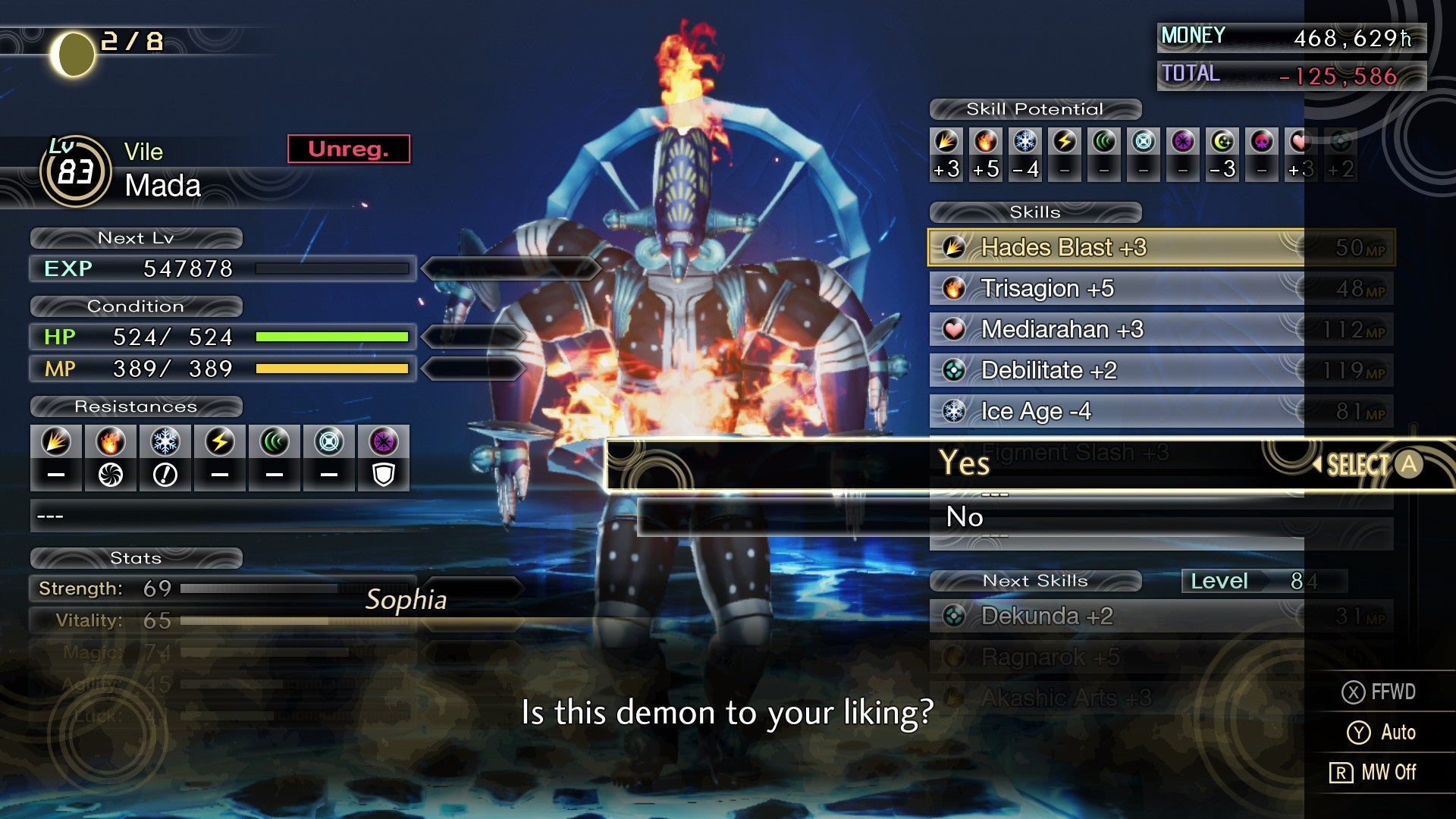
By sacrificing two (or sometimes more) demons at the Cathedral of Shadows, you can summon a new, more powerful demon. The resultant demon can retain some of its predecessor’s skills, stats, and experience points. The list of fusible demons will always be longer than the ones available to you via negotiation in any given area. This allows you to fuse demons with the exact skills and affinities to best handle a given boss fight.
Shin Megami Tensei doesn’t just ask you to use its fusion system though, it demands that you abuse it. For example, fusion has a handful of rules — the most frequently invoked of which is that you cannot fuse a demon with a higher level than your player character. This rule is designed to prevent you from fusing outrageously powerful demons in the early game. However, there are ways to subvert this rule. You can pass stats and experience points down through the fusion system, which means that you can artificially increase the power of a given demon. Sure, you can fuse a normal Level 44 Black Frost with 40 Strength, it’ll do all right in combat; or, you can use pre-leveled demons with boosted stats to get a Level 47 Black Frost with 50 Strength, an unreal set of passive skills, and no weaknesses to absolutely shred a boss.
When you go from getting absolutely rolled by a boss, to obliterating them with a team of highly specialised demonic weirdos, it is incredibly satisfying. Shin Megami Tensei V believes the only way to beat a god is to build a better one.
Washing Away of Wrongs is a contemporary art installation formerly on view at the Cleveland Art Museum. The piece is composed of two sealed dryers, each of which contains an aromatic. The smells are designed to evoke an intense emotion in the audience. I have visited the exhibit three times with three different groups of people and I haven’t seen it fail once.
The first dryer is nostalgic and gentle. The second makes people weep. It is wet, earthy, and rotten. It does not sting the nose. The tears are not a physiological response. I wonder what could’ve happened, what tragedy was so great as to stain our generational memory — what could bring me to tears, thousands of years removed from the violence. I often wonder if this is what a dead god smells like.
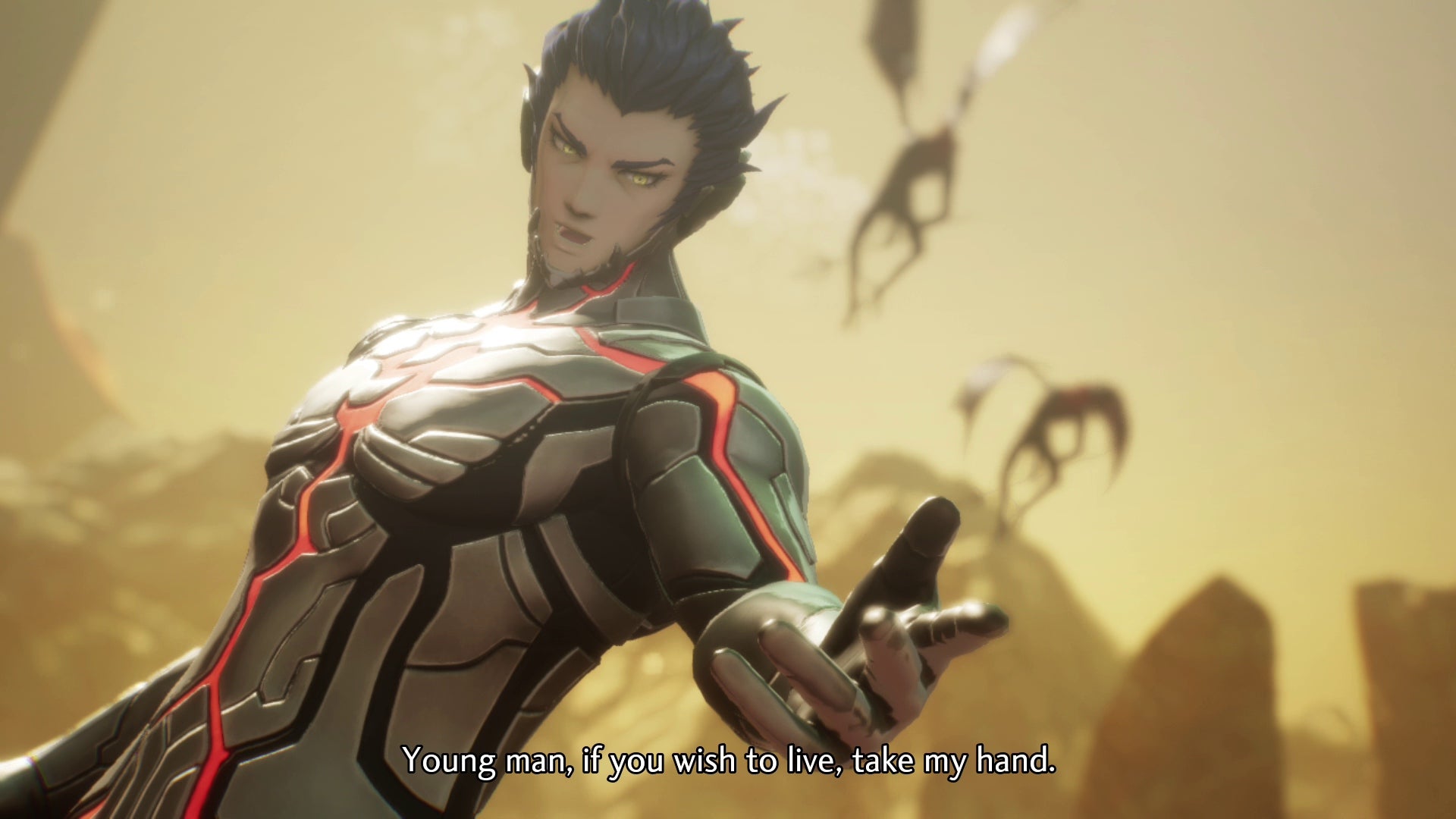
In addition to the fusion system, you’ll also rely on Miracles and Apotheosis to give you an edge in combat. With the throne of God empty, your status as a Nahobino gives you the power to alter both demons and the laws of reality itself.
SMT V introduces essences, which are effectively the raw skills and affinities of a given demon in item form. The essence of Power, for example, is weak to Dark attacks, immune to Light Attacks, and has a variety of Light-based skills. Through Apotheosis, you can grant these skills to any demon regardless of how they were fused. This opens up demon customisation in a really exciting way. Combining Apotheosis and Fusion can allow you to make some absolutely unreal demons.
Additionally, the Nahobino has the unique ability to take on the affinities of any demon. If you’re struggling with a particularly hard boss, you can just grant the Nahobino an immunity to its most powerful attacks. It is a really welcome addition to the series that allows for you to be a lot more fluid with the skillsets of your demons.
Miracles are passive abilities which you can purchase with Glory, a resource you find scattered throughout the game’s environment. Miracles cover the basics like how many skills your demons have, how much items cost in the store, and what attack types your Nahobino is best at using, but also allow you to modify more fundamental mechanics like how demons pass down experience points, what generates Magatsuhi (a resource which allows for extremely powerful Omagotoki skills), and so much more. It is a great expansion of the App system introduced by SMT IV and SMT IV Apocalypse.
This isn’t the only way Shin Megami Tensei V builds on its predecessors though. The game is a thematic and narrative successor to SMT IV Apocalypse, which (spoilers) ends with you killing the Abrahamic God, but feels like a spiritual successor to SMT III: Nocturne. The Nahobino resembles Nocturne’s Demi-fiend, and most of the game takes place in a blighted, apocalyptic version of Tokyo that has been rendered almost unrecognizable and contains very few humans. Both games are decidedly lonely. However, I think that SMT V manages to pull off this lonely atmosphere much better through its use of contrast.
SMT V takes place in two different Tokyos: contemporary Tokyo and post-apocalyptic Tokyo. This allows the game to have its lonely cake and eat it too. By having more human interaction and character motivations in contemporary Tokyo, the strangeness and cruelty of apocalyptic Tokyo feels so much more significant. Your character, as a fusion of human and demon (similarly to the Demi-fiend), is an embodiment of both worlds, and the game uses this to great effect narratively and thematically.
However, in attempting to fuse two Tokyos, Shin Megami Tensei V underprioritizes its human heart. In the game’s first major “you’re no longer just wandering a desert” plot beat, SMT V tries to tell a story about bullying. There is a girl who is bullied. You’re close with her friend who is worried about her. The bullied girl is, unsurprisingly, possessed by a demon, and then all hell breaks loose.
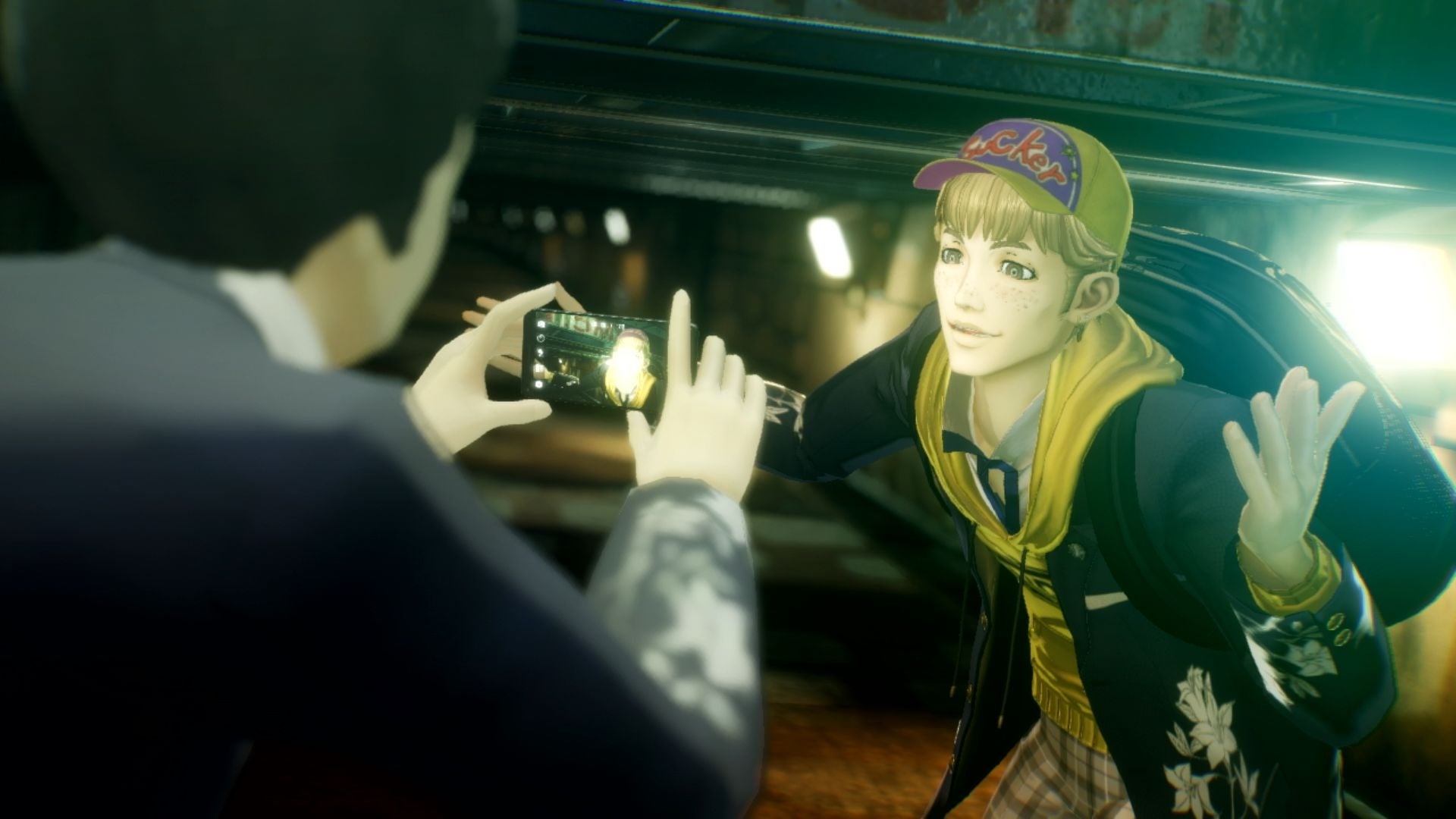
There were several moments throughout this arc that I knew were supposed to affect me. Desperate pleas, tearful confessions, and tragic deaths were everywhere, but they lacked emotional weight. The moments themselves are well executed upon — the camera holds perfectly on pierced ribs, slow falls, and pathetic cruelty, and the music hits just right. The problem is that you’ve known these characters for all of 30 minutes. In comparison to the eight to ten hours you’ll spend on your first journey into the Netherworld, the setup for the game’s first major arc only lasts between 30 minutes and an hour depending on your reading and listening speed.
SMT V’s pace rapidly oscillates from breakneck to glacial, and the experience can be deeply disorienting at times. I wish the game had given me more time early on to shift between the demon and human worlds, to see how one touches the other. Instead it just uses underdeveloped tragedy to send you on its next quest.
And yet despite all of that, I cannot help but love this game’s writing. While the human characters can feel like quick caricatures, some of the demons you encounter are given the time and space to have some really great moments — particularly former gods, whose closeness to humans gives them just enough relatability for the divine horrors which befall them to work.
I mentioned previously that SMT V’s other divinities had been stripped of their godhood by YHVH, which creates some great story moments for fallen and falling gods. In the first part of a major side-quest line relating to the Egyptian gods, Isis asks you to hunt and kill a corrupted version of her own son in the hopes that he can be reborn sane. She shows genuine care for him, and the Egyptian god’s recurrence throughout the story lets you get to know them.
Demons are also given the chance to have much bigger personalities than their human counterparts. Most human NPCs are pretty subdued or clearly fall into a genre staple archetype. There’s the coward who wants to fight, there’s the cool older dude who is impressed by your developing skills, and there’s your gentle but firm commander. All of these characters are executed upon well, but they’re a bit paint-by-numbers. The demons, however, are a bunch of wacky weirdos and I love every one of them.
Demons are, without fail, big swings. They are funny, sad, and deeply erratic, and it works so well for the game’s tone. From your negotiations with demons to your interactions with the game’s scattered NPCs, Shin Megami Tensei V is consistently weird, which I am deeply grateful for. And when demons aren’t shitposting at you, they’ll probably be shouting philosophy in your general direction. This could be cringey but, luckily, Shin Megami Tensei V actually has interesting things to say about identity, selfhood, and power.
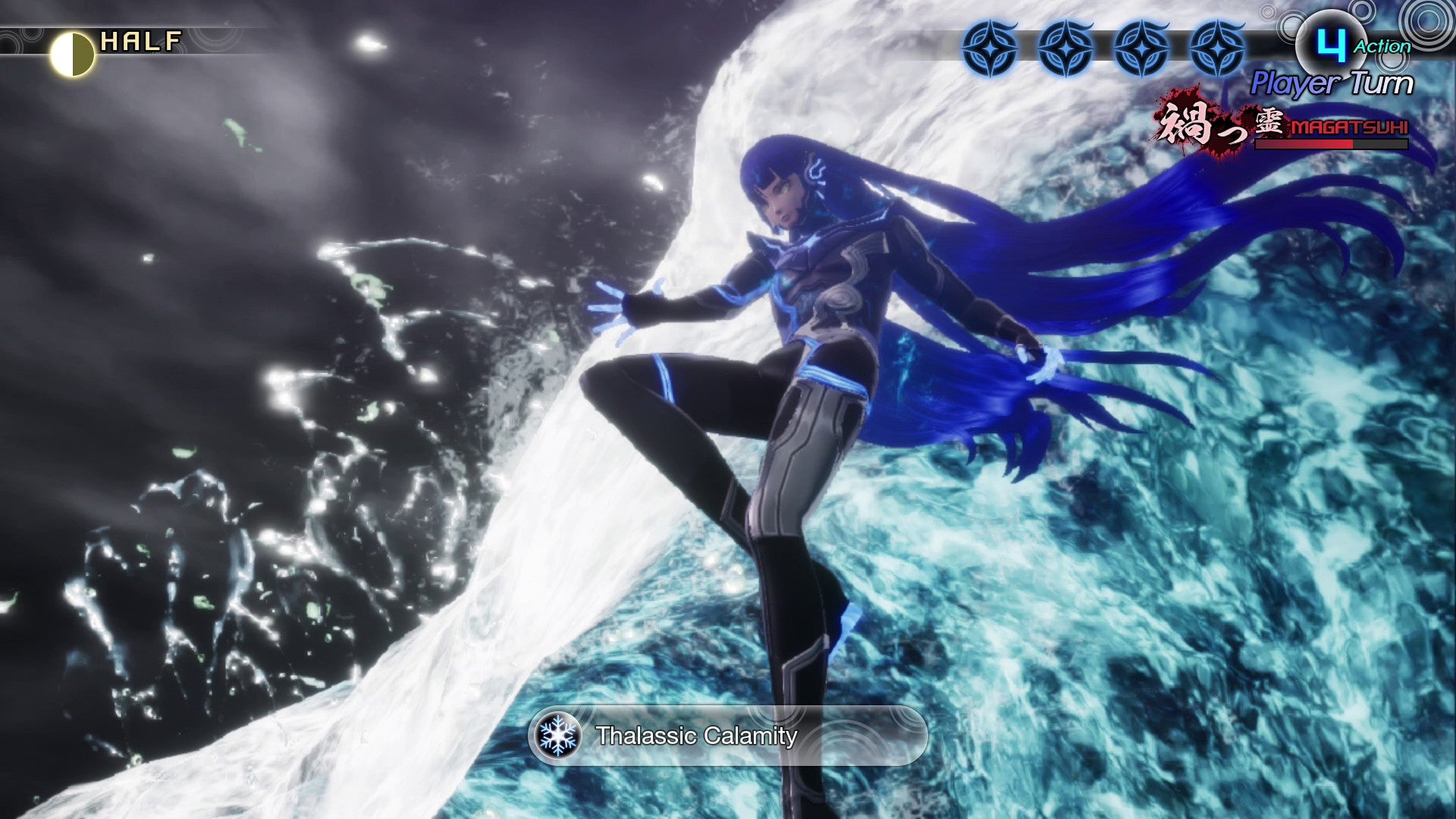
Shin Megami Tensei games have always been about power — how it is wielded, and how it is structured. The battle between the frequently libertarian forces of Chaos and the monstrously authoritarian forces of Law have always been the heart of the series. However, unlike previous games, Shin Megami Tensei V takes place after the battle has ended.
Shin Megami Tensei V understands, better than previous games, that systems outlive the people who build them. The God of Order is dead and in spite of this his army still stands — they still wage their doomed war. They cannot even admit that he’s dead.
Starting after the battle has ended allows Shin Megami Tensei V to more directly answer the question posed by every other game in the series: What comes after the revolution?
The Oven of Aknhai is a story from the Talmud set in the second century CE. In it, a group of rabbis debate the application of a particular law from the Torah to a new type of oven. One rabbi argues that the new oven is ritually pure, the others disagree. When he becomes frustrated, the dissenting rabbi calls out to God to show proof that he is correct. In response, a tree leaps from the ground. The rabbi, rightfully, takes this as an indication of God’s will. When the other rabbis do not accept the argument, he continues to call on God to prove his position through miracles. Miracles happen without fail. Eventually, the voice of God himself calls down that the dissenting rabbi is correct. The other rabbis respond that the Torah is not in heaven. It was granted to human hands, for humans to interpret.
When God witnesses this he laughs and says “My children have triumphed over Me; My children have triumphed over Me.”
In Shin Megami Tensei, gods and demons alike are created by humanity’s belief in them. They are the products of the stories we tell. Gods, built by our own hands, shape our lives.
Systems, and stories, outlive the people who made them — they twist and writhe and change the lives of the people who follow. Sometimes they grow so big that they feel inevitable, ceaseless. They become unending cycles and wars without generals — they become mistaken for the laws of nature itself. The war between Law and Chaos was built to serve a function, to maintain order — that function has since become unnecessary. A violent and unjust world can be reimagined through the same tools that built it.
In the last two years, across the globe and in the U.S. in particular, we’ve seen people failed by their states time and time again in the wake of a global pandemic. Failed by the bigger-than-us things that we, supposedly, built to protect us. And when they failed, people didn’t. If 2020 and 2021 are remembered for anything but their death count, I hope it’s the mutual aid that kept that number from being so much higher. All the grocery deliveries, rent strikes, and protests that brought cities to their knees were organised by people, not systems.
Shin Megami Tensei V believes in humanity’s capacity to change the world around us — possibly more than any other game in the series. I just wish it had given its human characters more time to actually make that argument.
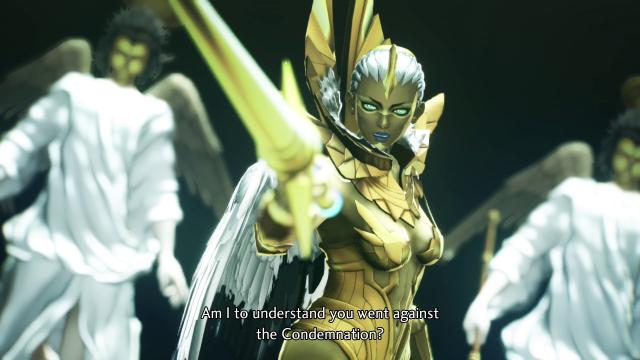
Leave a Reply